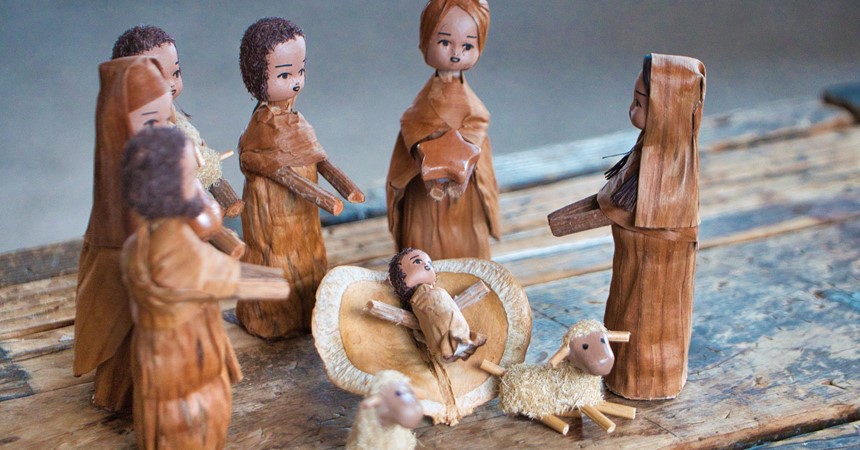Until that date, much of the liturgical focus of Advent – readings, prayers, etc. – has been on the hoped-for Second Coming of Jesus “in the fullness of time” or the “end of time”. There is a clear focus on what’s known as eschatological themes (from the Greek word eschaton, meaning last things). These themes can be uncomfortable for some people, but they are present in this first part of Advent.
Next Saturday, however, the focus shifts to the more immediate preparations for recalling the First Coming of Jesus as a human child born in Bethlehem. Again, the liturgical texts change in several ways. The readings and prayers for weekday Mass are no longer of a weekday in Advent but will become those of a particular date, e.g., the Mass of 17 December or the Mass of 23 December.
During Evening Prayer from the Liturgy of the Hours, the arrival of 17 December sees the beginning each year of the Great ‘O’ Antiphons for the Gospel Canticle. These are a series of antiphons that draw on the Messianic titles found in the Hebrew Scriptures, which later Christians attributed to Jesus in light of their experience of the Incarnation and the Scriptural accounts of Jesus’ life.
These antiphons are a wonderful series of texts that are worthy of prayerful reflection, and most people would know them best from them being brought together in the great Advent hymn O Come, O Come, Emmanuel.
This shift in the liturgical texts reminds believers that now is the time to begin getting all “Christmas-sy” and to begin preparing to celebrate the beginning of the great festival of Christmas rather than just celebrating the Season of Advent.
Now is the time for nativity scenes to start replacing advent wreaths in homes and for them to start appearing inside church buildings. Now is the time for Christmas trees to be put up and decorations arranged (yes, I know, that battle may already be lost!). Now is the time to begin doing those things that are associated with the beginning of Christmas.
Yes, the beginning of Christmas.
Because even in the face of these more immediate preparations, we are still not at Christmas. That great feast is still in the future.
The Christian festival is one of those rare liturgical celebrations that has not only a day associated with it, not merely an Octave (i.e., a whole week where each day is as important as the first), but a whole Season to explore. While Christmas will begin with the first Vigil Mass on 24 December, the Christmas Season will stretch right through until the Feast of the Baptism of the Lord, which in 2023 falls on Monday 9 January.
Our civil society sometimes wants to have us believe that Christmas concludes on 25 December before attention moves on to the “next big thing” (I’m thinking of the Boxing Day Cricket, the “post” Christmas Sales Extravaganza, or even the preparations for New Year’s Eve).
It can be a challenge to hold on to a broader observance of Christmas in the face of so much else that wants to move us away from it. Yet the Christian is continually called by our liturgical calendar and its associated Scripture readings and prayers to hold fast, to reclaim Christmas Day as the beginning of something that is worthy both of our celebration and our attention.
I don’t always succeed each year I have to confess, but that will never stop me from trying to keep Christmas not as a day but as a Season where we can celebrate God’s complete and overwhelming love for God’s people—for us!
I remain hopeful that one day I will succeed in maintaining my focus both on the Season of Advent and the Season of Christmas that follows it.
Follow mnnews.today on Facebook.

